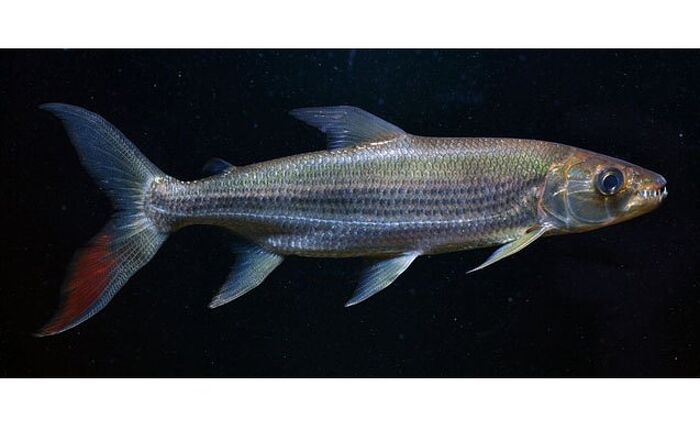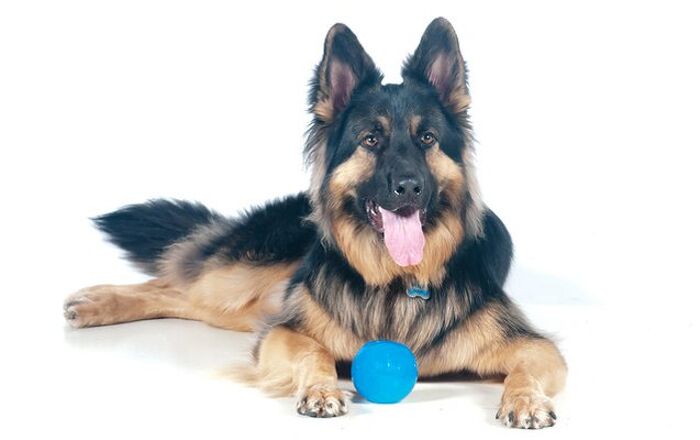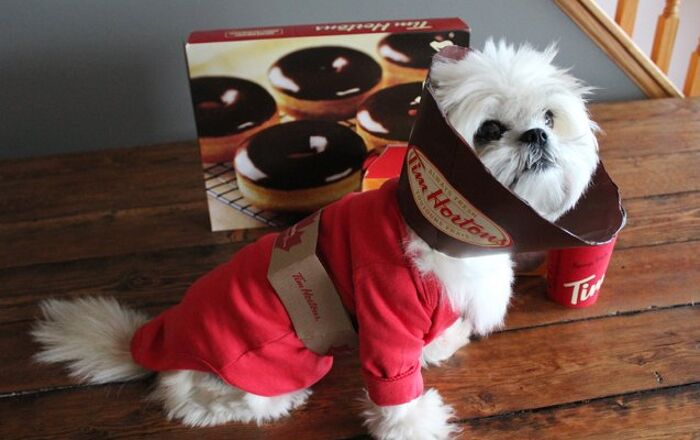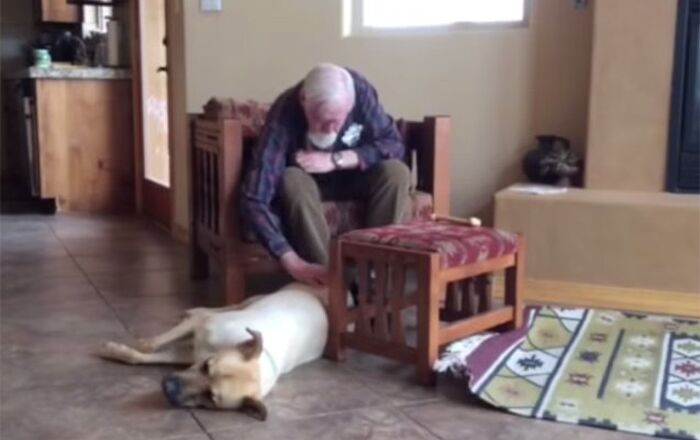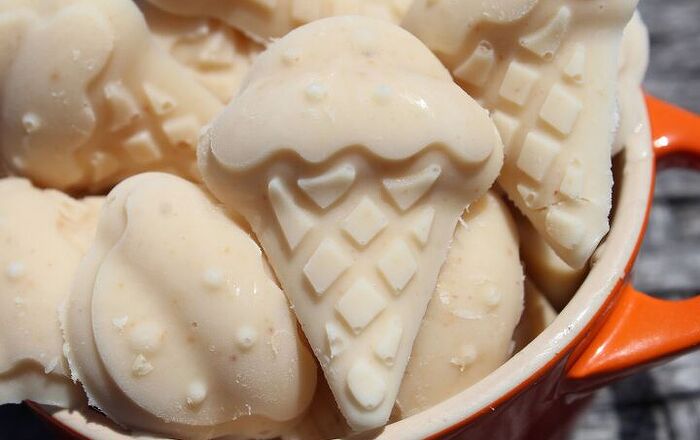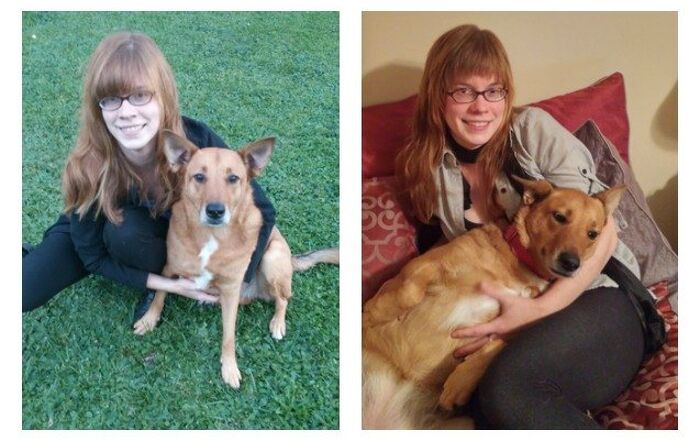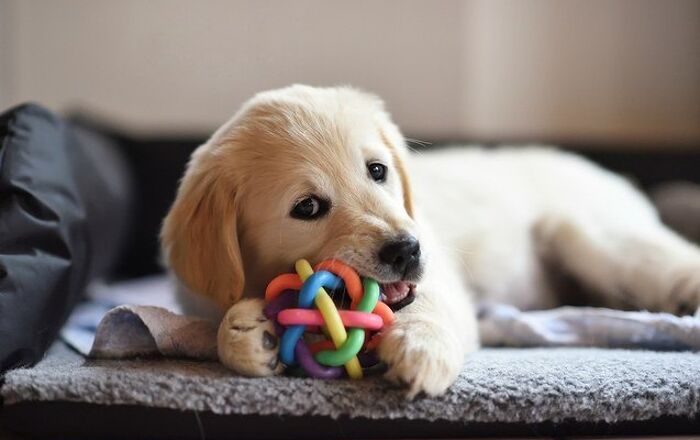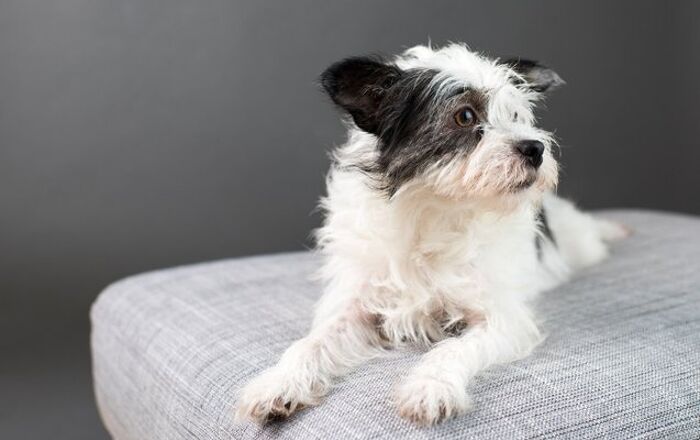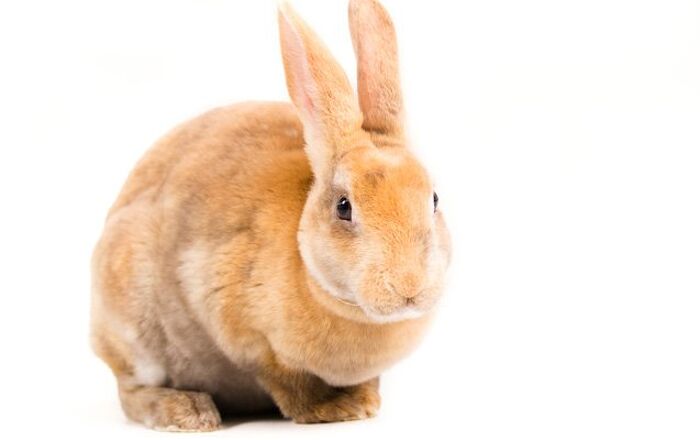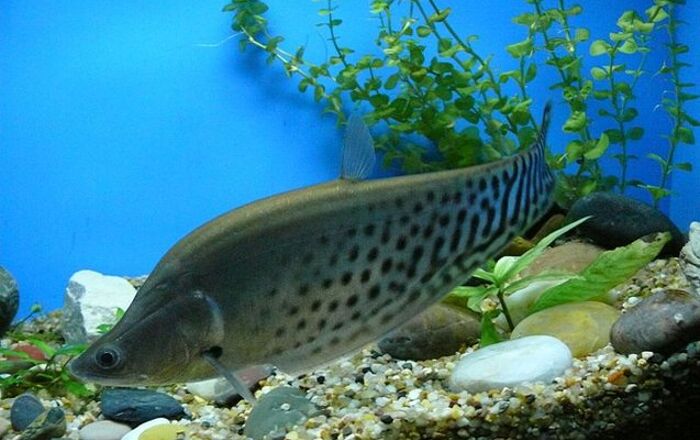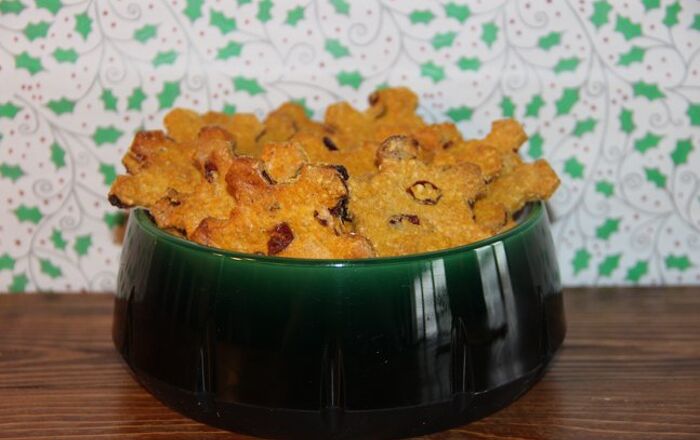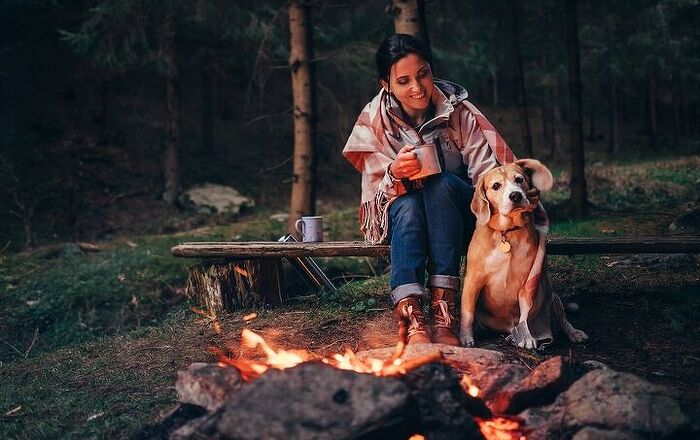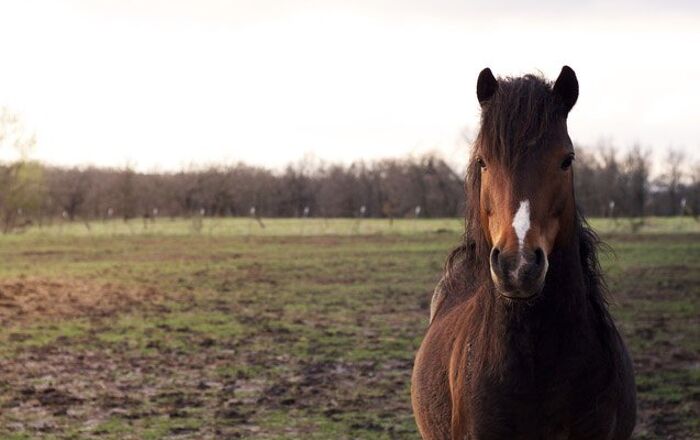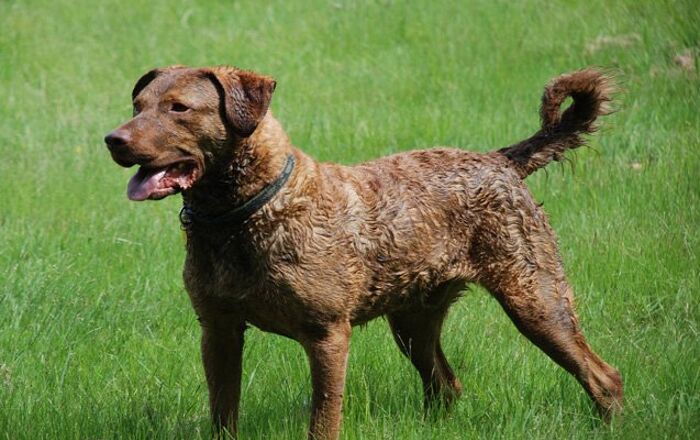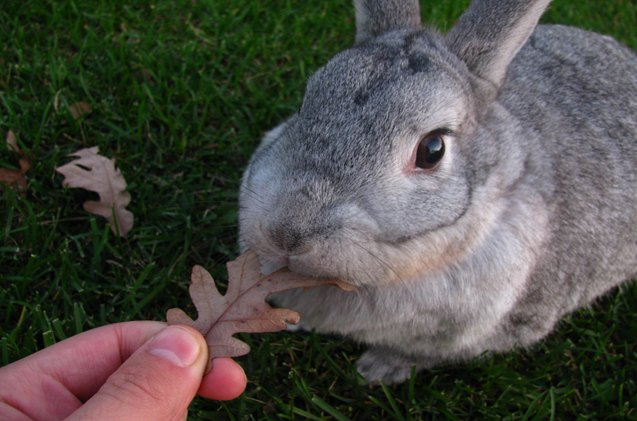
Giant Chinchilla Rabbit Breed History/Origin
The Chinchilla Rabbit arrived in the United States in 1919 and became an instant hit thanks to its gorgeous coat. However, breeders worked to develop a larger breed of Chinchilla, since the Standard weighed only 5-7 lbs. The American Chinchilla was developed in 1924, but a breeder by the name of Mr. Edward H. Stahl had plans to produce a larger version. He developed the Giant Chinchilla, which was created by crossing New Zealand White does, Standard Chinchilla bucks and American Blue rabbits. The Giant Chinchilla Rabbit was accepted into the American Rabbit Breeder’s Association (ARBA) in 1928.
The Giant Chinchilla Rabbit is the only rabbit of the Chinchilla family with a flyback coat.
Overall Description
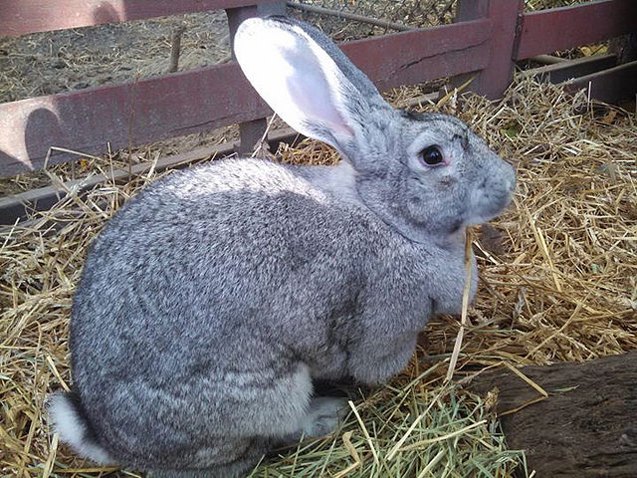
The Giant Chinchilla Rabbit should weigh between 12 and 15 lbs., with females usually weighing a pound or two more than bucks. They have a semi-arched body shape with powerful legs and feet, and a soft white underbelly. Its medium-length ears should also be straight and erect.
Coat
The Giant Chinchilla is the only rabbit of the Chinchilla family with a flyback coat, but the maintenance to keep them in tip-top shape does not differ from that of other rabbits with coats that have similar length fur. Owners will notice an increased amount of shedding two times a year. If you keep a Giant Chinchilla as a pet, it would be wise to brush them twice a week during these heavy molt periods outside with a slicker brush. Otherwise, grooming should be performed once biweekly.
Colors
Like the American Chinchilla, there is only one color accepted by the ARBA. The under color is dark slate blue at the base and the top edge a darker blue with a portion of light grey in between. The slight eye circles are a light pearl color and well defined. The underside of the tail is white while the topside is mostly black with a few white hairs. Eye colors can be brown, blue-grey or marbled, however dark brown is preferred.
The Giant Chinchilla Rabbit is known to be an easy-going pet who enjoys a laid-back lifestyle.
Care Requirements
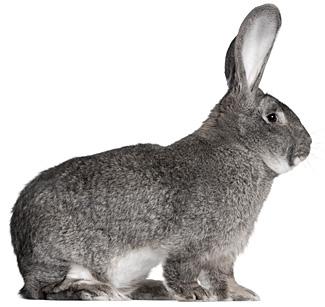
Due to this rabbit’s size, the Giant Chinchilla Rabbit needs a large enclosure to keep it comfortable. It needs to be at least 3 ft x 3 ft x 4 ft. – make sure that your rabbit can easily stretch out at the bottom of its cage. Enclosures should be made of wire and have a solid bottom (such as plastic or metal), as sores easily develop when rabbits lay on a wire-bottom cage for too long. The bottom should also be lined with hay (horse hay is acceptable), and need to be spot-cleaned for faeces every day and completely replaced at the end of every week. These rabbits do well either indoors or outdoors, but be sure that outdoor enclosures are covered from the elements (sun and rain), but also provide enough draft to keep them cool during warmer temperatures. When temperatures raise or drop too much, bring them indoors.
Pet rabbits follow the same diet as rabbits who are bred for meat, fur and show purposes. Its diet should consist mainly of hay (70 percent), while the rest should be a healthy balance of pellets, leafy greens, fruits and vegetables. Be sure to research what kind of fruits, vegetables, and greens that are rabbit-friendly. Limit the amount of fruits that are high in sugar (apples, for instance, are a good fruit as it does not contain high levels of sugar). Make sure to stay clear of iceberg lettuce, as it contains too much water and too little fiber to count as a good meal. Also do not feed your rabbit yard clippings as grass is usually treated with fertilizer, insecticides, pesticides, and other chemicals that can harm your rabbit.
When it comes to allowing your Giant Chinchilla Rabbit to play, indoor rooms need to be rabbit-safe, which means it needs to be free of things that can hurt them (such as wires). In order for your rabbit to play safely outside, always be vigilant in case a predator approaches (such as a racoon) and make sure they do not eat anything that can hurt them.
Health
Giant Chinchillas are not particularly susceptible to any specific hereditary disease, however there are many common problems that can occur if one does not take proper care of them. Cages should always be made of galvanized steel and should have a separate part where droppings will not get caught in their fur. This causes flystrike, an extremely painful condition that can result in death..
Be sure to check your rabbit’s ears for signs of ear mites and check your rabbit’s mouth at least once every other week to make sure their teeth are an appropriate size. A diet high in hay will make sure that its teeth are properly shaven down (hay does this naturally), but if you find your rabbit’s teeth are still growing out of control, a rabbit-safe block of wood it can chew on is sufficient to keep them at a reasonable length.
The American Chinchilla’s sweet nature and even temper makes it a wonderful pet for singles, couples and seniors.
Temperament/Behavior
The Giant Chinchilla Rabbit is known to be an easy-going pet who enjoys stretching out around in your home, contently just watching its human family go about their daily lives. The American Chinchilla’s overall sweet nature and even temper makes it a wonderful pet for singles, couples and seniors. As long as it is exposed to children when it is a kit, your rabbit will enjoy the presence of children.
While this breed is not overly excitable or energetic, it is wise to give your rabbit a few toys to play with whether they are inside or outside of their cage. Every rabbit is different and you’ll learn what your rabbit enjoys playing with by using the trial and error method.
When it comes to potty-training your rabbit, you may find it is significantly more difficult than training another pet such as a cat or dog. While more challenging, it is definitely not impossible to litter-train rabbits but they do require more patience and time than other animals. Many owners have found that placing several litter boxes around the house works best, as your rabbit won’t have to travel to the other side of your house to uses its bathroom.
Photo credit: Carl Heuer; 3palmszoo/Flickr; howarddl/Flickr

